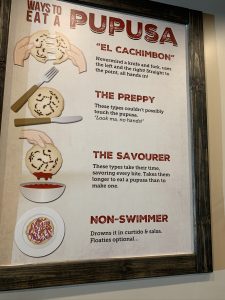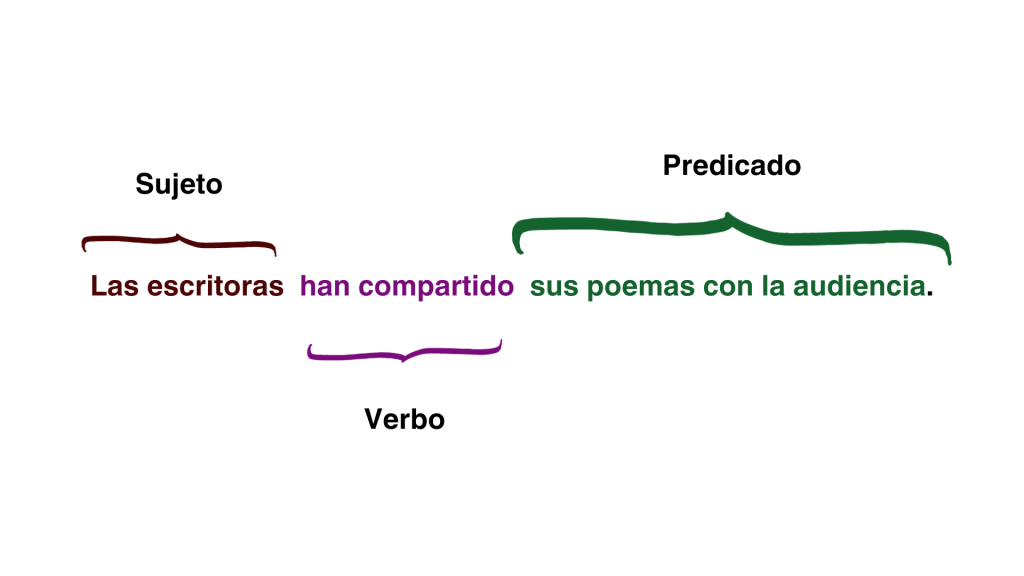2. Lectura
VII. El translenguaje en la expresión creativa
A. Vocabulario.
Actividad 7.1 Sustantivos, verbos y adjetivos.
B. Lectura: El translenguaje en la expresión creativa.
En el prefacio de la colección de poemas tejanos llamada, Asina is How We Talk, la profesora emérita y escritora Carmen Tafolla nos dice que esta colección es “a fresh and tasty morsel of language activism, a defense of that nepantla of a borderland between two cultures, two languages, two nations, where even how we accent our words, which languages we speak, and whether those languages are allowed to consort with each other become political, personal, and possibly confrontational action” (xiii). Cada poema que encontramos en este libro es un reflejo de su entorno cultural y lingüístico, sin disculpas y sin pedir permiso. Tafolla afirma que:
These words also represent a decidedly dual identity and culture, a freedom of speech and of belief, the belief that no language is sanctified and prescribed by God over others, unchanging and pure, but all are mixed, and the more they mix, the richer they get, for we are all mestizos, and we are all speaking languages that have been mixed between other sources to create the “standard” languages we now speak dynamic, enriched, ever-crossbreeding and improving in their literary wealth. (xiv)
En varios de los capítulos anteriores hemos mostrado cómo la pureza de la lengua no existe, ya que el contacto es inevitable, tanto como la inmigración. Tafolla afirma que, “Asina Is How We Talk, is an instrument of cultural survival, pride, and understanding, and a celebration of a dynamic translanguaging that brings laughter, growth, and healing” (xv).
Al principio de este libro, aprendiste sobre el translenguaje, el Spanglish, y el code-switch. Además de la colección de poemas antes mencionada, hay una colección llamada The Bard in the Borderlands: An Anthology of Shakespeare Appropriations en La Frontera que destaca el trabajo de dramaturgues indígenas y chicanes, quienes adaptan las obras de Shakespeare para reflexionar sobre las realidades de la frontera entre México y Estados Unidos. Es así como las editoras, Katherine Gillen, Adrianna M. Santos, and Kathryn Vomero Santos muestran una estructura que celebra los espacios bilingües y multiculturales, y descolonizantes.
B.1 The Tragic Corrido of Romeo y Lupe by Seres Jaime Magaña:
ROMEO
¡Así será, querida Lupe! Llámame “amor mío” y seré bautizado nuevamente con el nombre. Henceforth, I will never be called Romeo.LUPE
¿Qué clase de hombre eres? Cubierto por la noche y espiando mis pensamientos.ROMEO
By my name, I don’t know how to tell you who I am. Aborrezco mi nombre, porque es tu enemigo. Si yo lo hubiera escrito, arrancaría la palabra.LUPE
My ears have not yet drunk a hundred of your words, yet I know the sound. Aren’t you Romeo, and a Campbell?ROMEO
Neither, si ninguno de los dos te agrada.LUPE
If my primos see you, they will kill you.ROMEO
There is more danger in your eyes than in twenty of your primos.LUPE
Someone’s coming!ROMEO
¡Que vengan! My life better ended by their hate than death prolonged, wanting of your love.The Tragic Corrido of Romeo and Lupe – The Bard in the Borderlands: An Anthology of Shakespeare Appropriations en La Frontera, Volume 1 (pressbooks.pub)
Como verás en las próximas lecturas, así como en el ejemplo anterior, los autores bilingües muchas veces usan las dinámicas discursivas del translenguaje para escribir cuentos, novelas, y poemas entre otros.
B2. Lectura: Pupusas at 17 por Elena Foulis.

I remember the first time—
San Francisco’s mission district,
sitting down at my first
Salvadoran restaurant.
La señora me pregunta
“¿De qué las quiere?”
She saw my blank stare,
gifted me four options:
“De frijol, queso con loroco,
chicharrón, revueltas.”
I was seventeen.
Someone, please explain!
Revueltas, con loroco, I said.
Me, mexicana con raíces salvadoreñas,
eating pavo for Christmas,
but never pupusas.
Do pupusas taste different
when you first eat them at 17?
My mom tried to convince me
I ate them as a child.
Pero esas no
son mis memorias.
My mom, always trying to fit in,
to hide, to lose her Salvadoran roots.
Not because she wanted to—
it gifted safety through passing.
I find them in every city I visit.
In Columbus and Cleveland,
in Boulder, LA, Dallas,
Houston, and the RGV.
Where las señoras
del mercado
las cocinan en frente de mí,
redonditas, rellenitas, doraditas.
I make pupusas, but they
are not perfectly round,
I make salsa, but it is more Mexican
than Salvadoran: curtido, hot pepper slices.
I eat them with a fork,
pero con salsa picante, por favor.
B3. Lectura: El Hey She Bee is the barrio’s grocery store tiene de todo! por Eddie Vega, The Taco Poet.
In the produce section –
naranjas and grapefruit
lemons and limones
onion, tomato, jalapeño, cilantro, and apio
also collard greens and mustard greens
plus exotics like broccoli and asparagus
The carnicería has the usual cuts –
seven steaks, fajitas, short ribs, and spare ribs
plus gringo cuts like rump roast and Boston butt
brisket is stored under lock and key
pork and poultry always in stock
barbacoa on Saturday and Sunday only
The deli has ham and bologna
plus the two types of cheese – yellow and white
The panadería has more than just pan dulce
también sourdough and Hawaiian rolls, pero in limited quantities
the tortilla aisle also has sliced bread and buns para los hot dogs
Of course there’s toda una sección de foreign food –
Vienna sausage, pimento cheese, and all the stuff to make the casseroles
En el business center hacen todo:
cashean cheques
sendean money orders
venden lottery tickets
te dan el registration del carro
una de mis friends even got her divorce there
In the morning, huele a Fabuloso
in the afternoon, elotes
and at night, puro sudor from all the people that just got off the day shift
El Hey She Bee del barrio is smaller than the ones in fancy parts of town
pero tiene de todo
Actividad 7.2.
Comprensión y discusión.
- En el ejemplo corto de la obra de teatro, The Tragic Corrido of Romeo y Lupe, ¿Qué notas sobre el translenguaje? ¿Cuál es su función? ¿Cuándo ocurre? Si en vez de “primo” utilizara “cousin” ¿Cómo cambiaría el mensaje?
- El poema de Foulis incluye un poster con las diferentes formas de comer pupusas ¿Las has comido? ¿Cuál es tu estilo? Según Foulis, en su poema, ella las come con el estilo preppy.
- Los poemas de Foulis y Vega se centran en la comida, sin embargo, su tono y ritmo es muy diferente. En un cuaderno, describe el tono y ritmo de cada uno y haz una lista de las emociones y sensaciones que provocan cada uno de los poemas.
Las expresiones en el pasado que incluyen el presente.
Algunas expresiones de tiempo |
Cómo lo usamos |
|
Hoy |
Hoy no hemos podido levantarme temprano
|
|
Todavía no
|
Todavía no he visitado los murales del WestSide
|
|
Nunca, siempre
|
¡Nunca han comido tanto como hoy!
Siempre he tomado café por las mañanas |
|
En los últimos días
|
En los últimos días he estado pensado en ti.
|
|
Ya
|
Ya he escrito muchos poemas
|
|
Hace
|
No he visitado San Juan hace muchos años.
|
Ojo:El pasado perfecto se compone del verbo auxiliar (helping verb) haber (he, ha, has, hemos, han) y los verbos en participio (hablado, comido, vivido) con algunos verbos irregulares (roto, escrito, visto, muerto, abierto, cubierto, puesto, dicho, hecho)
Actividad 7.3
Completa estas oraciones sobre los poemas y obra de teatro en este capítulo. Usa cualquier expresión en el pasado que funcione mejor. Recuerda escribir una oración completa que incluya el sujeto (yo, tú, mi familia, mis amigues, etc), un verbo que exprese el pasado (hemos visto, han comprado, vi, comimos), y un predicado (lo que nos da detalles de la acción).
Checa esta oración.

1 ¿Has visto una obra en vivo alguna vez? ¿Cuál?
2. ¿Alguna vez has actuado en una obra?
3. En la obra del capítulo, ¿Qué te ha llamado más la atención del lenguaje?
4. ¿Has escrito un poema?
5. En el poema Pupusas at 17, ¿Por qué Foulis ha utilizado este título?
6. En el poema de Foulis ¿Cómo ha aprendido a comer comida salvadoreña?
7. ¿Por qué dice que su mamá la quiere convencer de que ella comió pupusas de niña pero que esas no han sido sus memorias?
8. En el poema de Eddie Vega, ¿Qué palabras ha utilizado para describir este supermercado?
9. ¿Qué memorias te hace recordar?
10. ¿Has tenido experiencias similares a las de Vega?
Actividad 7.4
Dictado. Escribe las oraciones que escuchas en los siguientes audios.
Works cited:
Gillen, Katherine, et al., editors. The Bard in the Borderlands : An Anthology of Shakespeare Appropriations En La Frontera. Arizona Center for Medieval Renaissance Studies Press (ACMRS), 2023.
Vega, Eddie, editor. Asina Is How We Talk : A Collection of Tejano Poetry Written En La Lengua De La Gente. Flowersong Press, 2022.
preface
between, in the middle of
reflection
surroundings
as much as
highlights/stand out
